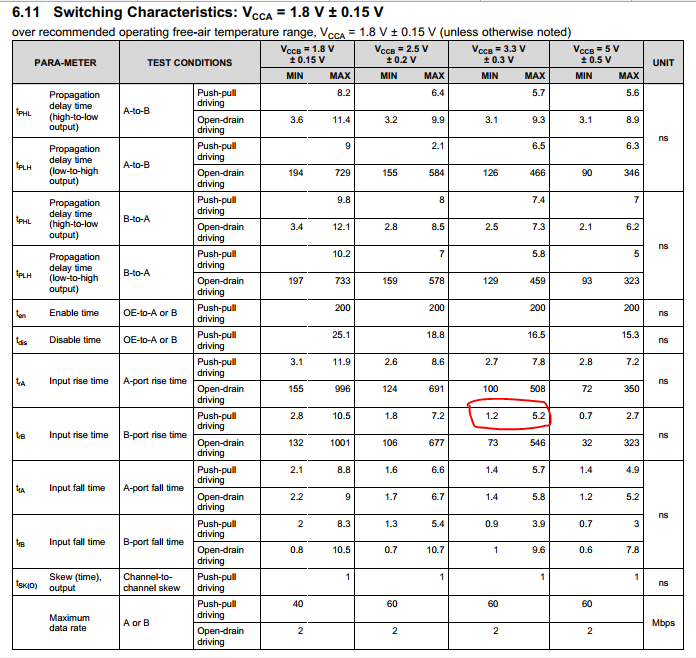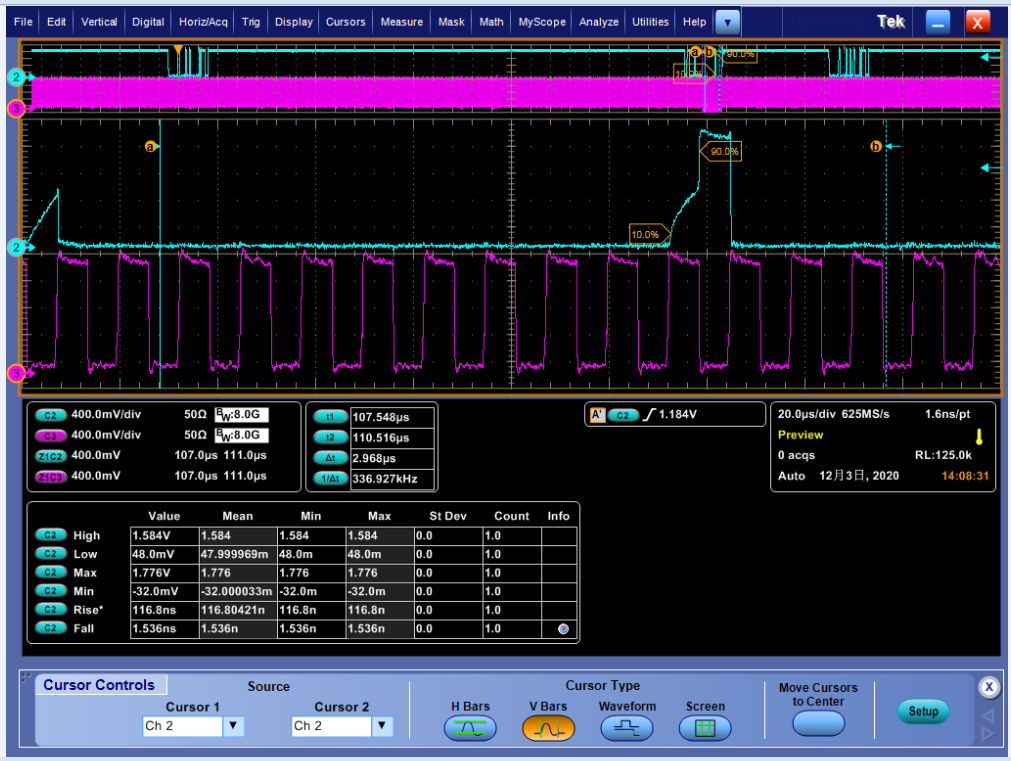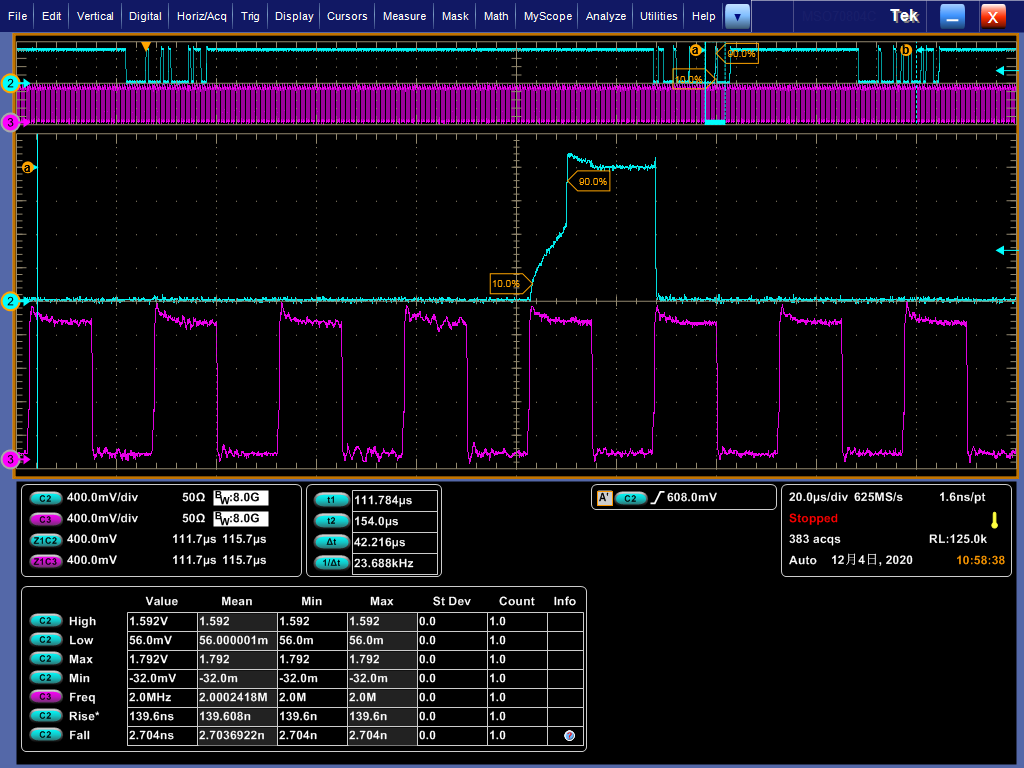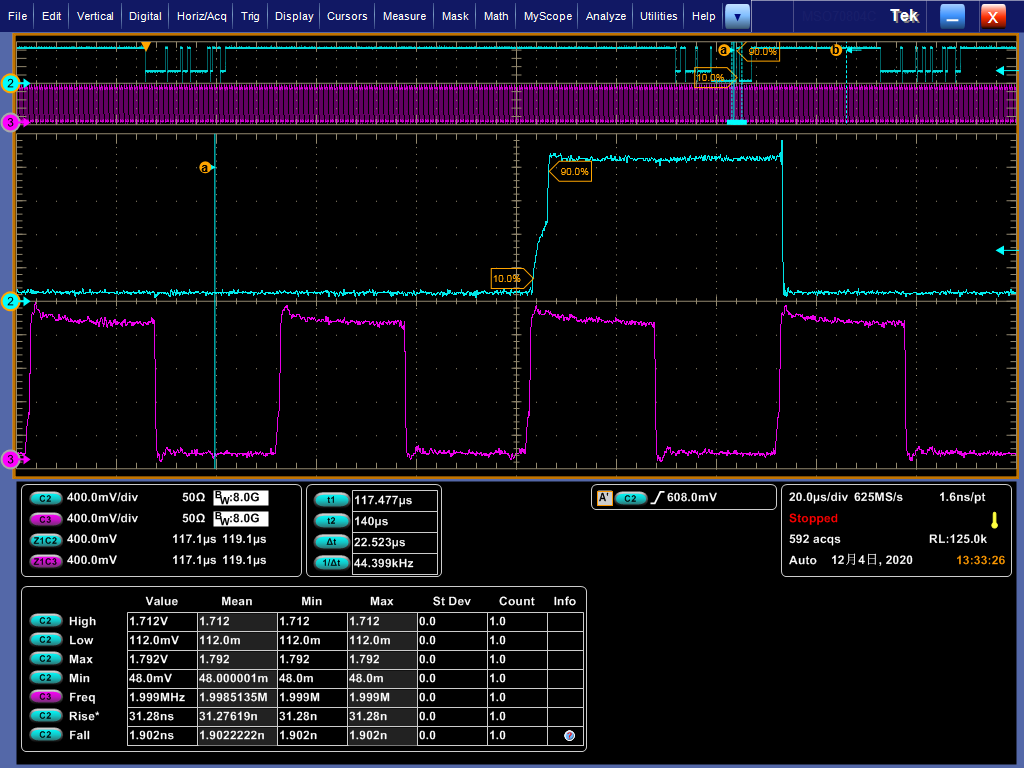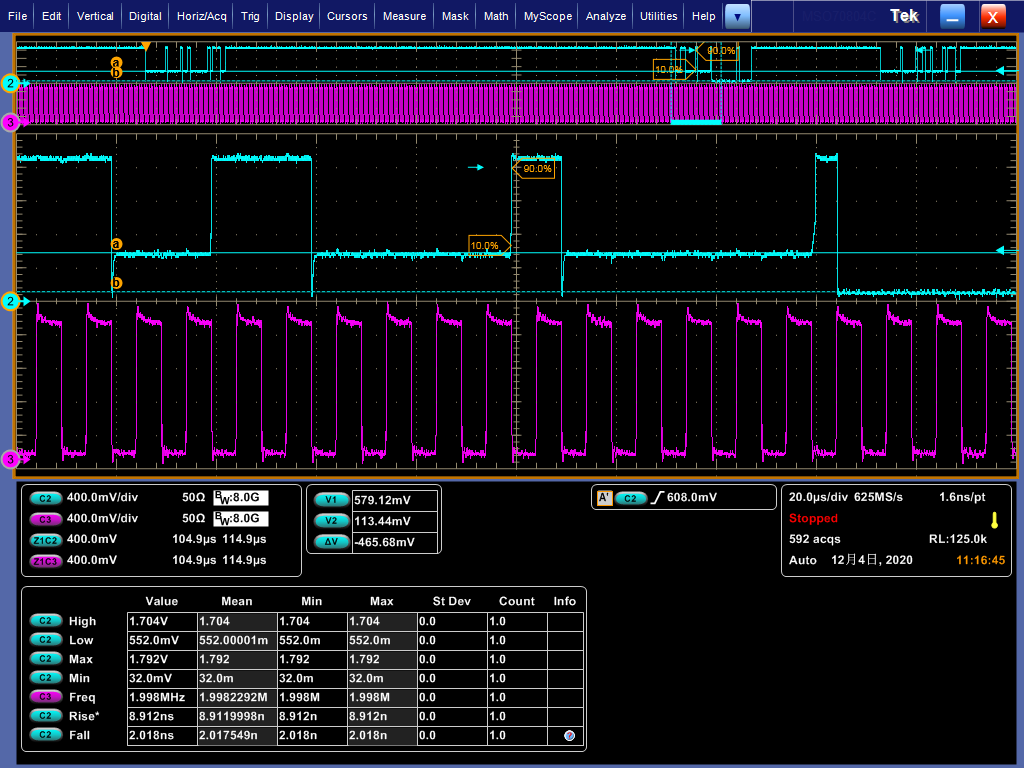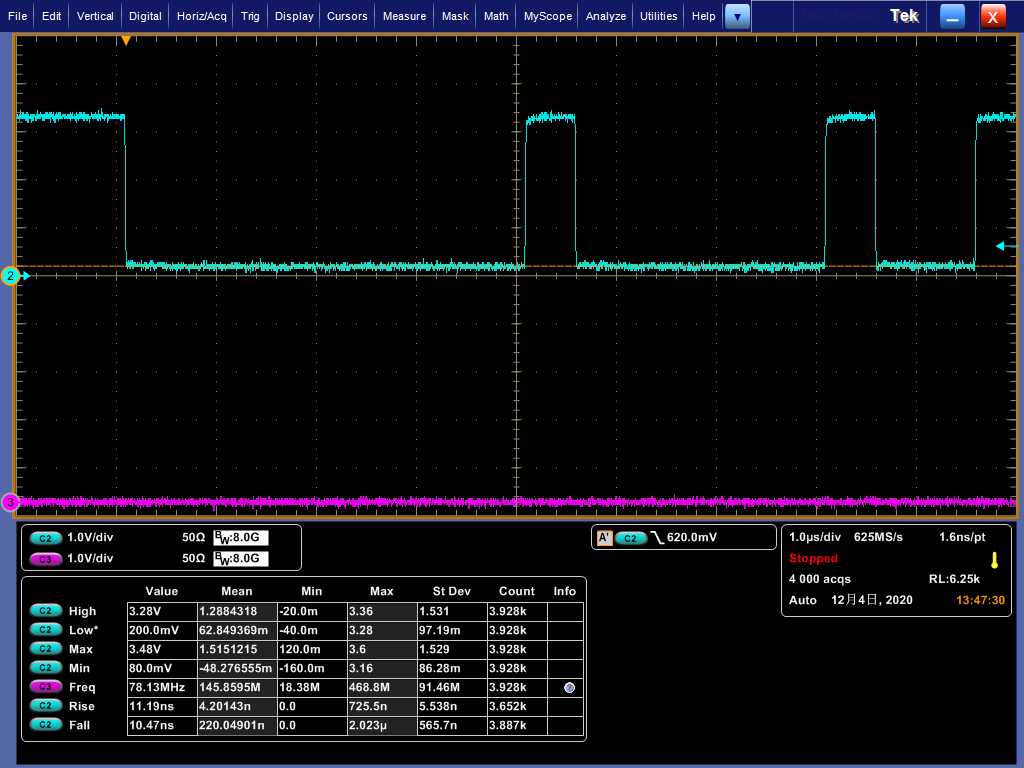Hi team,
My customer is using the TXS0108E now and have several questions want to double check with you.
1) We want to check the data with red circuit is test result or input requirement for 60Mhz. The real application is VCCA=1.8V,VCCB=3.3V, data rate 4Mbps and 2Mbps, whether our device have slew rate requirement?
2) When we do the real circuit design for MDC(push-pull) & MDIO(OD). The schematic is below. We find the 1.8V MDIO input waveform(blue) has 2 slew rate during rising period( slow to fast) which is popular for all the boards. We want to check the reason, could you please help?
Thanks.


